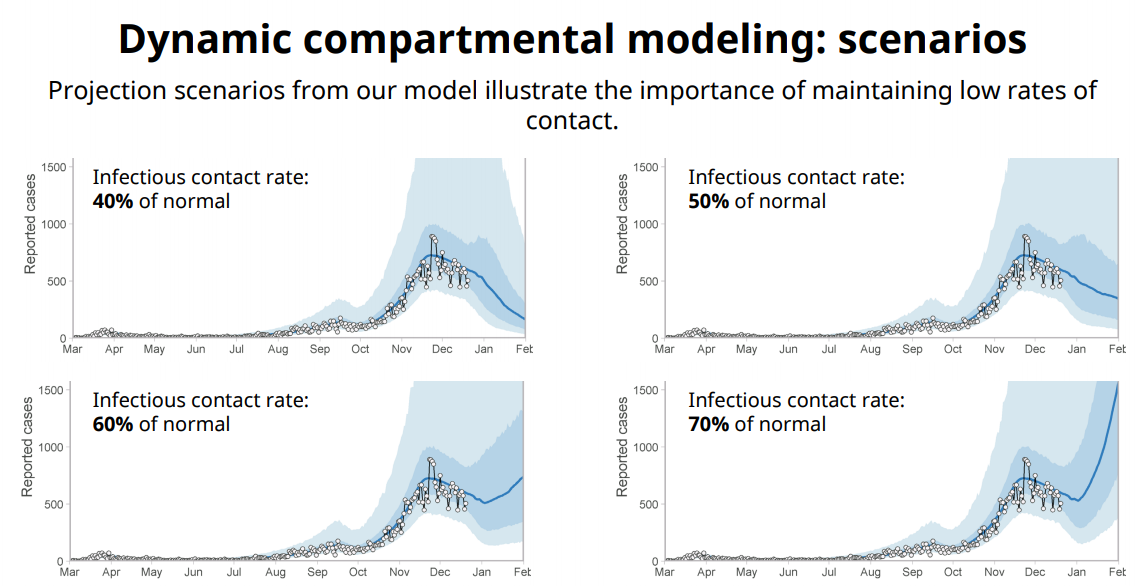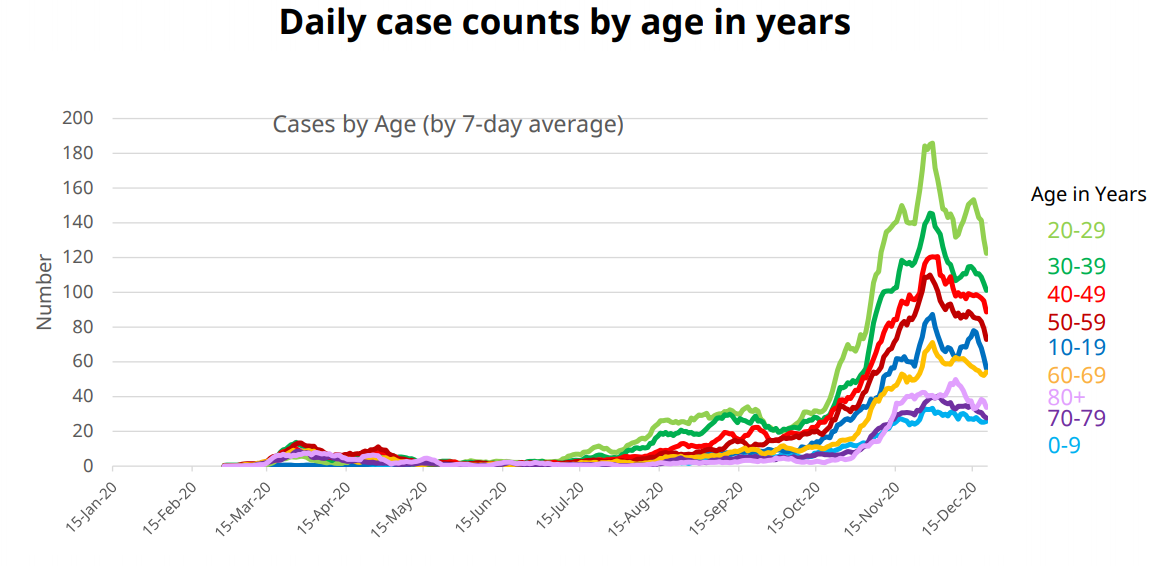British Columbia appears to be flattening the curve of infection in the second wave of the COVID-19 pandemic, according to modelling data presented Wednesday.

“We have bent our curve, slightly, and we’re now perhaps on a downward trajectory,” provincial health officer Dr. Bonnie Henry said in a live briefing.
“(But) the model shows us that it would not take much for us to get back into a danger zone again.”
According to Henry, the province hit its peak at more than 800 new cases per day in late November and has begun to trend downward — a reflection of restrictions implemented last month.
The province is projecting a slow decrease in new daily cases if people can keep their contacts to about 40 to 50 per cent of normal, and that anything above that would send case numbers up again in January.
The trend line of new hospitalizations has also stabilized, but remains at its highest level of the year. There were 348 people in hospital Wednesday, 80 in intensive care.

Get weekly health news
Henry said most new cases remain linked to known outbreaks and clusters.
“It means we have not lost our ability to do contact-tracing and to identify outbreaks as early as possible, although we have been delayed in some areas,” she said, referring in particular to northern B.C.
Wednesday’s data suggested that COVID-19 remains heavily concentrated in the Fraser Health region, though rates have climbed in the interior and the north in December.
New cases per capita in those areas have dipped in recent days, but test positivity has stayed above 10 per cent in the Interior and Fraser Health regions, and between five to 10 per cent in the Northern and Vancouver Coastal Health regions.
The vast majority of cases in the second wave have been in people aged 20 to 39 years old, while hospitalizations and deaths are still disproportionately associated with people over the age of 70. Only one person younger than 40 has died of COVID-19 in B.C.
“Age remains the single most important risk factor for severe illness or death from COVID-19, and younger people — children — are still underrepresented compared to their proportion of the population,” Henry said.
She also provided a more detailed breakdown of COVID-19 data related to schools.
About 12 per cent of the province’s cases have been school-aged children — a number Henry said has been stable since the start of the pandemic.
There have been 526 exposure events at 1,942 schools, though she took pains to stress that an “exposure” does not mean transmission.
Vancouver Coastal Health has recorded 200 school exposures, for example, but transmission in only about 10 per cent of those cases.
In Fraser Health, where there were 384 exposures — many of them in Surrey — transmission occurred in about 12 per cent of cases.
Known transmissions tended to be among adult staff members, she added.
“The data shows us that we are not seeing schools as a place where transmission spreads widely, and that tells us that when the safety protocols that are in place in schools are followed. it is a very safe environment.”
Wednesday’s briefing also included an updated timeline for vaccine rollout.
By March, the province should have received 792,000 doses of the Pfizer vaccine and 250,000 doses of the freshly-approved Moderna vaccine.
B.C. is expecting its first doses from Moderna next week, which will be shipped to all parts of the province, Henry said.
The province is aiming to vaccinate about 150,000 people by February, including 83,000 residents and staff in long-term care and assisted-living, 30,000 front-line healthcare workers and 25,000 people in remote First Nations communities.
By the end of March, B.C. is hoping to get at least the first of two doses of the vaccine to 400,000 people.













Comments